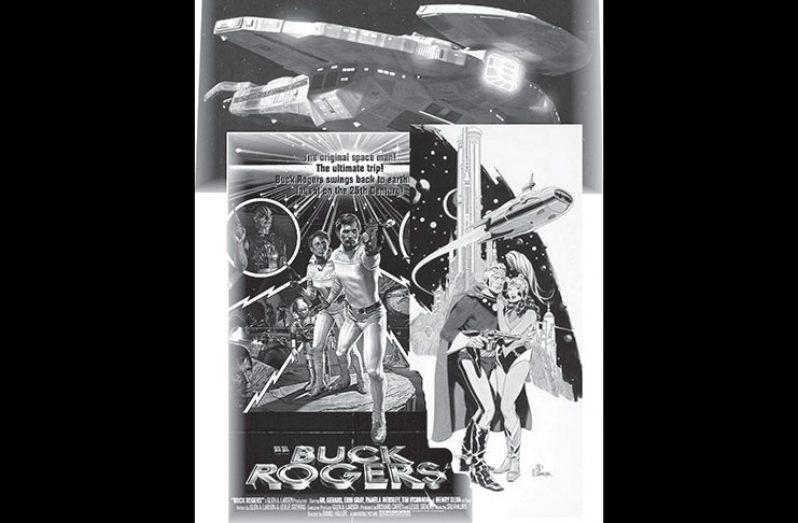THE world’s first submarine came to life in the narratives of Jules Verne’s novel, ‘Twenty Thousand Leagues Under the Sea’ in 1870. The ship of Captain Nemo would grip the imagination of readers and movie goers since its first publication.
By WWI, 1914/18 the submarine was a reality. Today, the nuclear submarine will test the imagination of any world citizen who has not failed to pay attention to this formidable masterpiece of naval armament. We humans have always displayed the complex indication to ascend, through tribal association and methods of collaboration, to survive and strive beyond other denizens of the mammal and known reptilian worlds, navigating heavenly bodies for seafaring and as omens for things mystical.
The relationship with the Gods and the sacred symbolic language [whether you subscribe to the argument that we created the ‘Gods’ or that they created us] and the incredible epics separating Good and Evil from different extreme perspectives that suited our survival, and our creative relationship with the world of matter that led the ancient Africans of Khemet to experiment with Alchemy, and share its philosophy and methods throughout the ancient world as the foundations of Chemistry and the agreed, initial consciousness of organised scientific thinking.
To challenge the unknown, however, seems ingrained in our genetic makeup. That the manifestation of scientific expression differed on geographic locations is not surprising. On one side is the mystical architecture of Khemet; its astronomy/astrology, their medical knowledge of botanicals and healing methods, while their military armoury did not climb sufficiently beyond their nomadic and other neighbours. This more likely has to do with the early agrarian advances made by some cultures, enabling them to divert time for other developments.
SCIENCE OF THE ANCIENTS
The science of the ancients was fuelled by the symbolic language of the sacred of that age. The emerging confidence in self and efforts by some proponents of science to dismiss the very existence of the mystical as irrelevant was countered, possibly not intentionally [not sure] by the creative world of Science Fiction and the duel adventure worlds of the sciences captured in comic books for the young in the early 20th Century to the present.
Colonisation did impact on the sciences, creating space for pseudo doctrines with parallel mystical and biblical twists that were the impetus of the movement that enveloped science in a racist cocoon. This was the era of Darwin, Galton, Eugen Fischer and numerous other leading and supporting minds of the ‘Eugenics Creed’ that led to a culmination in WWII.
Though we cannot elaborate on that era, it is mentioned as a reference to the fact that Art and Cartoons also played an important role in illustrating the ideas of inequality among humans, as a justification for enslavement and mass murder. The comic book also played its role to defuse the massive indoctrination of over 200 years that launched the dogmas of WWII that endured in the following years after.
The responsible graphic novel-comic book writer and illustrator is subject to lead the reader into a balanced world. Every sensitive topic has to be explored; his/her renditions have to be well considered, because that visual creative field of communication, much older than the written/typed page, is executed.
Graphic storytelling has been used as an effective propaganda weapon in Guyana and across the world. Eusi Kwayana had seriously objected to an illustrated booklet edited by Mrs Janet Jagan on the pre-independence ‘Disturbances’, where scandalised ethnic misrepresentations were presented in the accompanying artwork. The booklet was subsequently redone.
PRECEDENTS IN OUR ERA
We have to look at the precedents in our era as to how were the science infused in the imagination of the young and not so young of the nations that spiralled the scientific breakthroughs in the past 75 years.
With no great search, we will find that popular culture, from movies to illustrated books, toys and comic books, saturated those western nations, and that they reached us, but conveyed in many of us that this was not our thing. We never saw ourselves in the backdrop, storyline or the locations of the adventures that gripped our attention but isolated us at the same time. While at home, those levels of friendly adventure propaganda were not in the discourse of neither the artists nor of the educators. Nor were the subject matter of even the discussion of what Einstein’s theory represented even at a simplified level introduced into the curriculum. Nor was added in our geography class the element of special clays, and how they are applied to industry,
To widen the awareness to primary students of the varied applications locally possible in the fields of science, this should have been possible in Region Ten at a start.
Look carefully. Industry and probable science have always played an important part in drama over the last thirty years. The comic books your children read today, if you can get them to buy, is not the same thing you read 40 years ago.
Today, have your dictionary close by.




.png)









